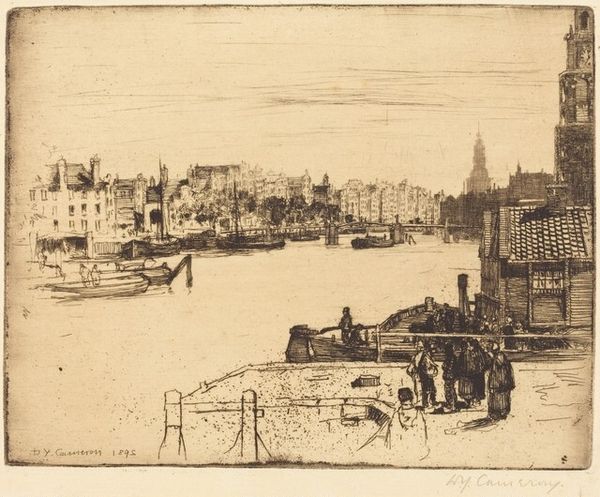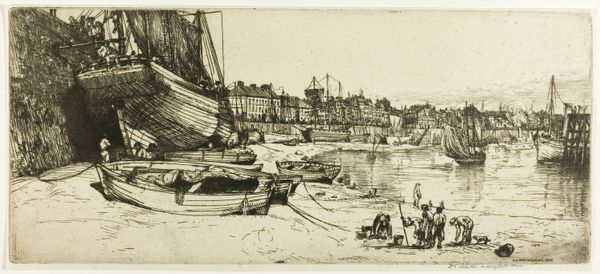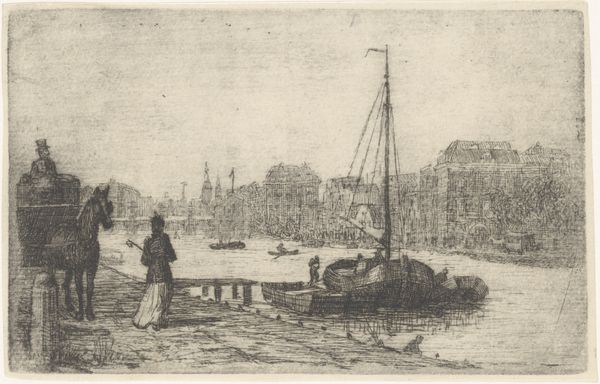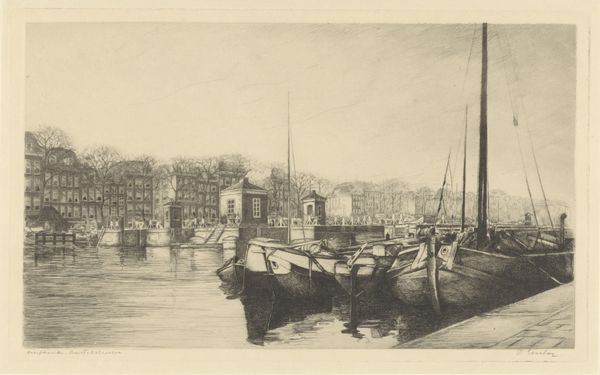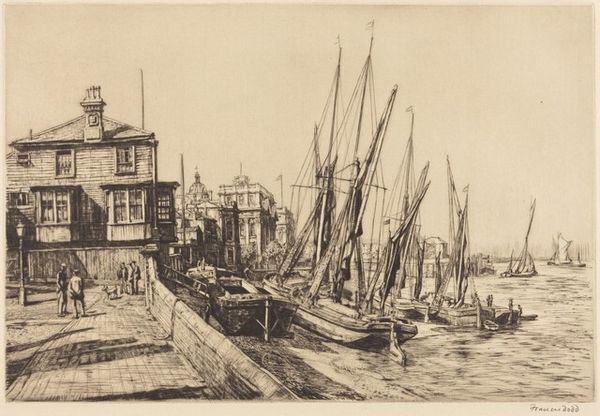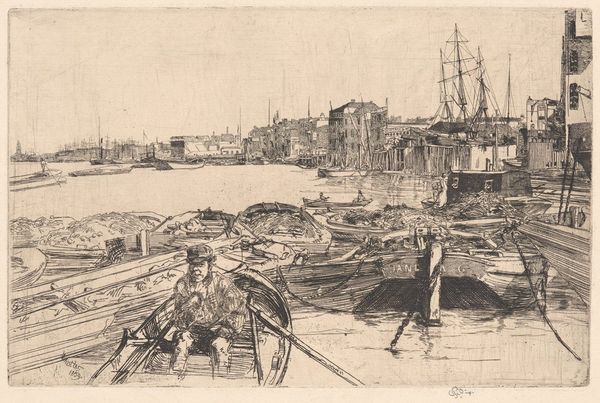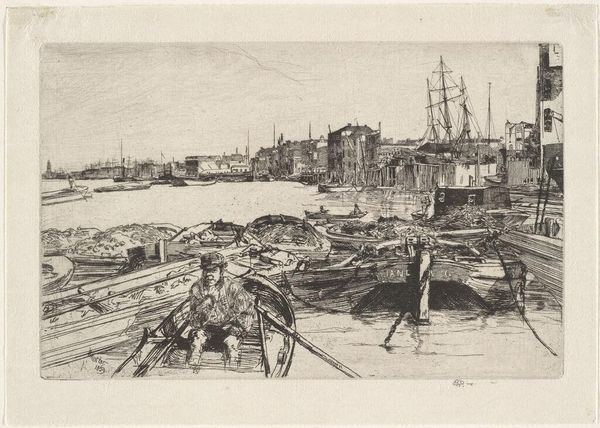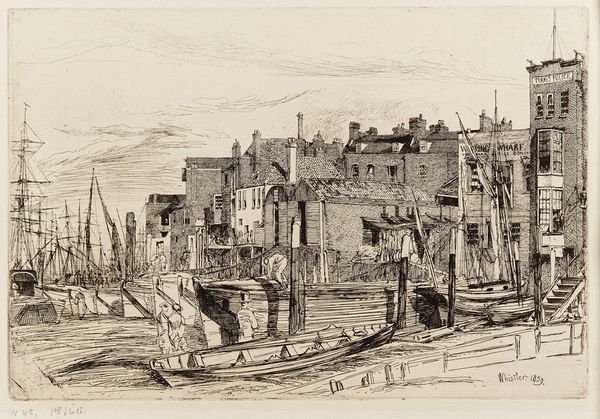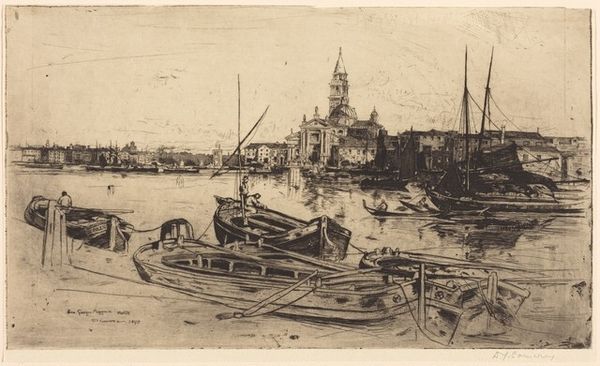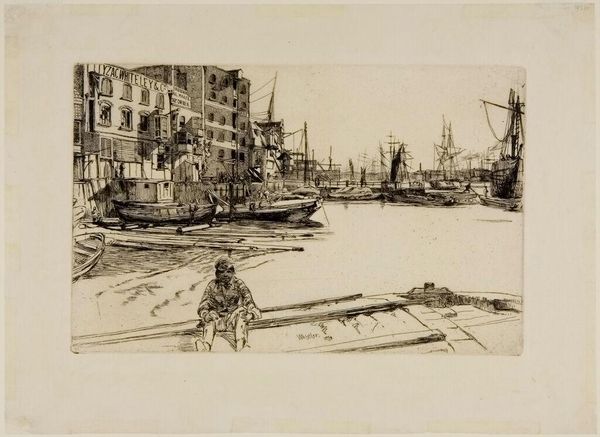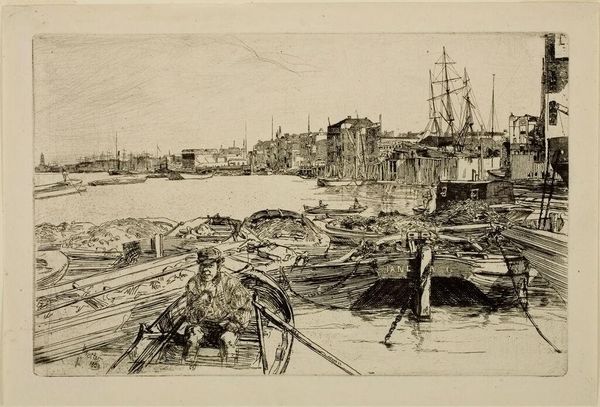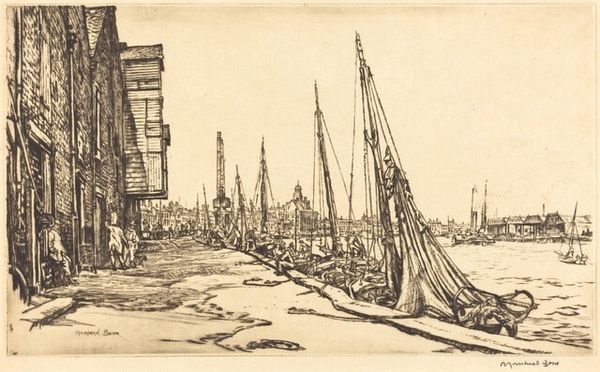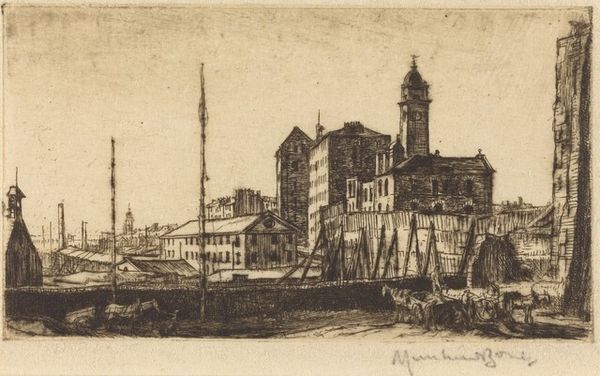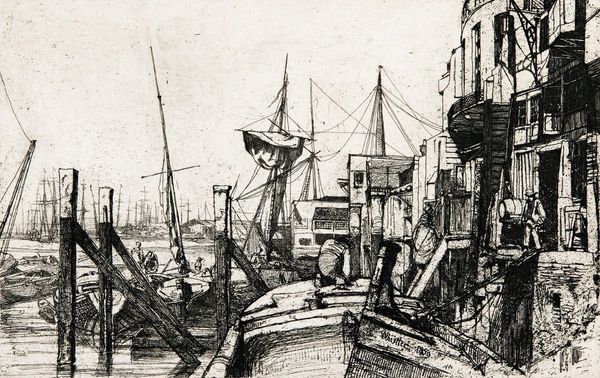
drawing, print, ink
#
drawing
#
ink drawing
# print
#
landscape
#
ink
#
cityscape
#
realism
Dimensions: plate: 23.3 × 32.8 cm (9 3/16 × 12 15/16 in.)
Copyright: National Gallery of Art: CC0 1.0
Editor: Okay, next up we have "Low Tide, La Rochelle," a 1927 ink drawing by Henry Rushbury. The level of detail is striking – it almost feels like a photograph. I’m curious about why Rushbury chose this particular perspective and how it reflects the period. What do you make of this image, considering its historical context? Curator: That's a great observation about the photograph-like quality! In the 1920s, printmaking saw a resurgence. Artists like Rushbury were fascinated by capturing modern life, but they also engaged with historical representation. Notice how he meticulously renders the architecture, the ships, even the textures of the tidal flats. He is depicting a modernising Europe and, significantly, engaging with the imagery of progress, power and the picturesque that have become tied up with La Rochelle. This is not only a cityscape but a representation of a city’s identity in a changing world. What sort of narratives does Rushbury appear to be telling? Editor: So it’s not just a picture of La Rochelle, but an active interpretation of its social position. He's carefully curating this image, choosing to highlight the city’s architectural grandeur as well as its nautical industry. He seems aware of the power dynamics at play. It is interesting how this becomes a 'postcard' image which the artist has played upon through use of light, shape and shadow. I do think I was at first not really thinking about the cultural influences embedded here. Curator: Exactly! Think about who was commissioning and buying these kinds of prints too. Middle-class collectors eager to possess these picturesque views, often seeking reassuring images of progress and prosperity, a counterpoint to anxieties surrounding rapid change. You started by discussing the technical prowess shown. Rushbury isn't simply presenting La Rochelle. The artist's selective depiction reinforces a desired narrative that echoes throughout printmaking’s long social history and role in representing civic power structures. Editor: That really shifts my perspective on the work. I was focusing on the "what" of the image rather than the "why" and "for whom." Thanks for drawing attention to those important layers! Curator: It is so important to ask what an artwork says about the public context for artistic work; I, too, often appreciate a reminder.
Comments
No comments
Be the first to comment and join the conversation on the ultimate creative platform.
